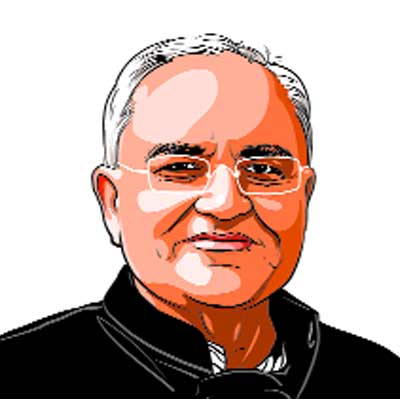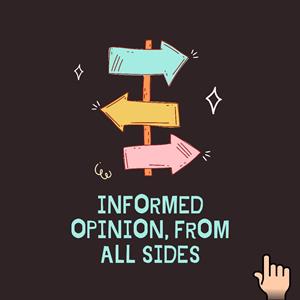Opinion The old establishment is out of office, but still powerful
Balbir Punj writes: It continues to control public discourse in India. This is a problem
 Balbir Punj writes: Though it has been out of office for almost eight years, the left-liberal pack is still in power. It continues to control public discourse in India. (Representational)
Balbir Punj writes: Though it has been out of office for almost eight years, the left-liberal pack is still in power. It continues to control public discourse in India. (Representational) The article ‘Media In The Dock’ by John Brittas (IE, June 9) is in part laced with innuendo and partly a veiled account of his exasperation with the common people’s temerity to think for themselves and deviate from the roadmap drawn by an intellectual oligarchy that has been in power since Independence.
Being in power doesn’t necessarily mean being in office, and vice versa. Though it has been out of office for almost eight years, the left-liberal pack is still in power. It continues to control public discourse in India. The Nupur Sharma-Naveen Jindal controversy is the latest example underlining the power of this nexus that cuts across continents, ideologies and creeds. Blind hatred of Prime Minister Narendra Modi, and angst against a rising India, are its glue. The Nupur-Naveen duo is accused of blasphemy and hate speech. Within hours of the alleged blasphemy, video clips of their statements were resonating across continents, unilateral trials conducted and guilt pronounced, followed by a clamour to punish them. Isn’t this real global networking?
One question in this context begs an answer. Has anyone explained what was “hateful” or “blasphemous” in what was said? Worse, there is a cowering silence over the death and rape threats to Sharma. And these aren’t empty threats. In the recent past in India, several innocents, such as Kamlesh Tiwari, accused of blasphemy, have met violent death at the hands of zealots.
Brittas, however, is right when he says “the Ramjanmabhoomi movement led by the Sangh Parivar changed the mediascape drastically”. This movement, no doubt, triggered a cerebral revolution in the country. The national debate that followed the years-long struggle for a Ram Temple in Ayodhya helped explode many myths, raised questions about ideologically constructed paradigms, reconnected common people with their hoary past, and unshackled large sections of society from narrow doctrinal confines and encouraged them to look for facts about their history and identity.
Why is there any confusion about national identity or history in the first place? A little recap: After Independence, with help from a complicit, acquiescing establishment, the Left managed to become the sole arbiter on values like secularism, pluralism, human rights and individual liberty in the Indian public discourse. And there couldn’t have been a bigger joke.
The Left — along with the British and the Muslim League — was the prime mover for the creation of a theocratic Pakistan. It is now a high priest of secularism in India. Communism believes in the supremacy of the proletariat and has contempt for human rights. Violence is central to Communist working, and the system is notorious for quashing dissent ruthlessly.
The brand of “secularism” we usually see in practice in India has germinated in a Communist petri dish and is flavoured by a Pakistani mindset. Pakistan isn’t only a country, it’s an idea that transcends borders. An Indian passport holder too can have a Pakistani mindset.
The debate kickstarted by the Ramjanmabhoomi movement brought out these contradictions in the “secular” construct of India’s history and culture. Brittas accuses the media (especially TV) of “raking up issues that have created schisms in society” post-2014. The media hasn’t created the Hindu-Muslim problem; it merely mirrors it. Shooting the messenger doesn’t help.
Yasin Malik, accused of killing four Indian Air force officers in Srinagar in 1990, was “a youth icon and a poster boy of Kashmiri aspirations” for a section of the media prior to 2014. He is now behind bars. This is the change unacceptable to many. With the mushrooming of competitive television channels and the emergence of a vibrant social media, the stranglehold of vested interests on the flow of information is loosening. Their capacity to set a facts-free narrative tailored to fit their ideological straitjacket is getting compromised. Opposition to, and massive public support for, a movie like The Kashmir Files underlines the changing Indian media scene. Contrast this with the conspiratorial silence of the media on the targeting of Hindus in the Kashmir Valley during the period of1980-90.
I agree with Brittas when he says, “the Sangh Parivar organisations don’t participate in the democratic process only for power”. Pursuit of power has never been the Sangh’s motive. However, I differ with his interpretation of the Sangh Parivar’s “core agenda”. The Sangh draws inspiration from India’s rich past and ceaselessly works for a strong, inclusive, plural, democratic India, wedded to social justice and gender equality. Obviously, creeds and ideologies having extra-territorial loyalties and fissiparous tendencies and lacking faith in democracy and the right to dissent, find the Sangh irksome. The reasons are obvious.
The writer is a columnist and a former chairman of Indian Institute of Mass Communication (IIMC)






